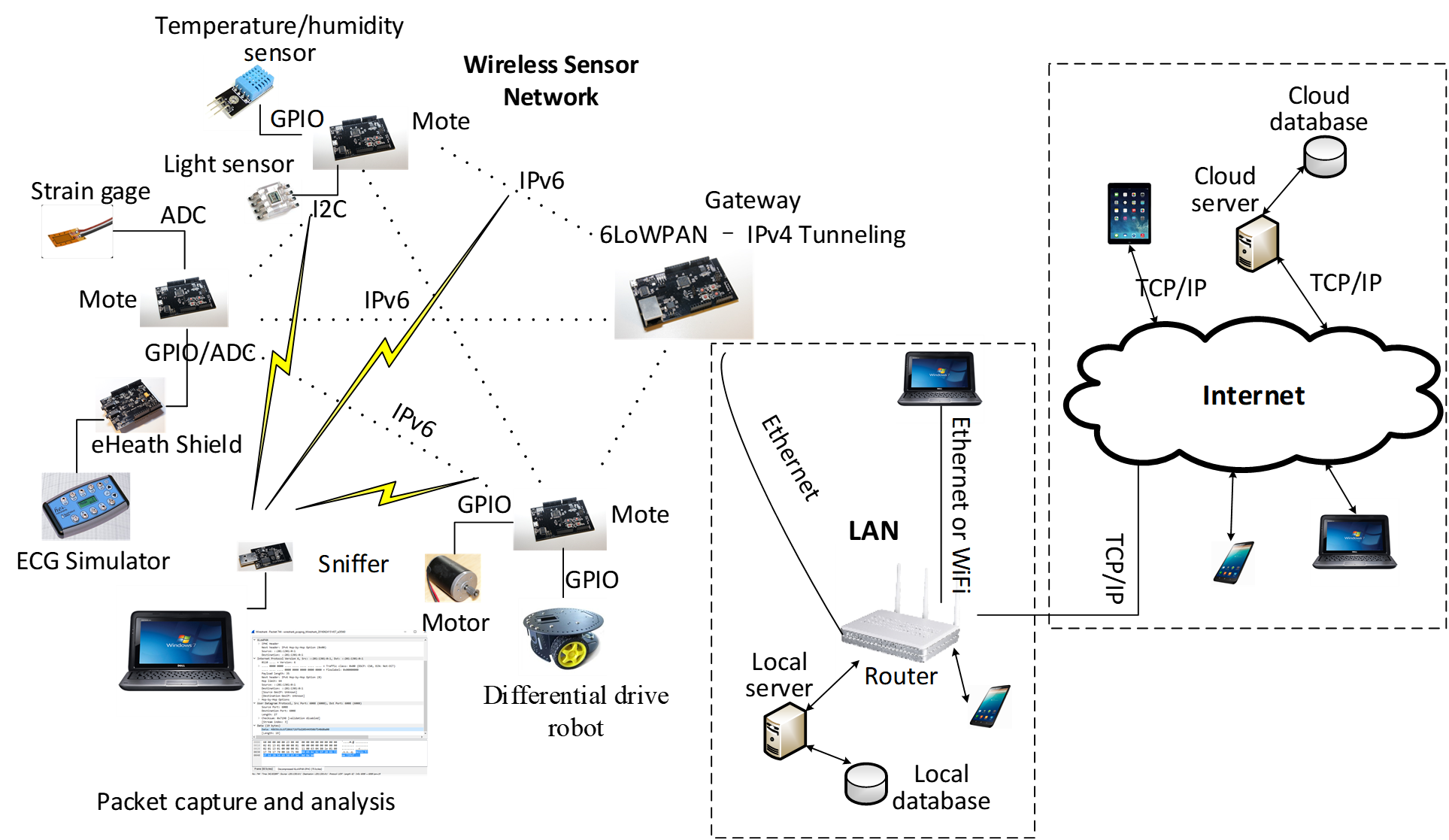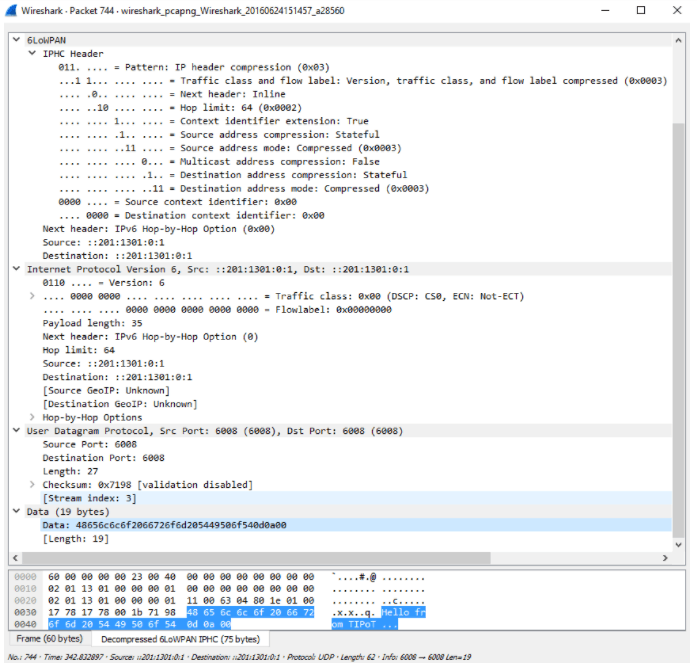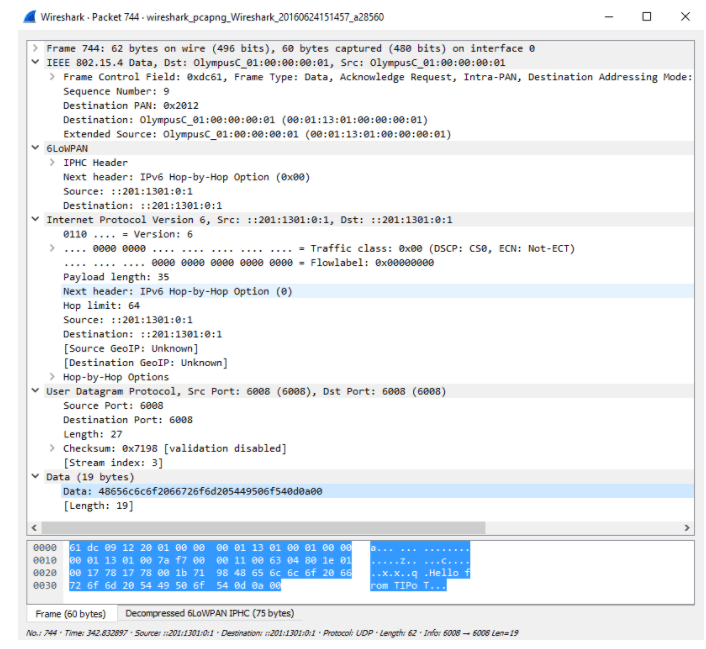TIPoT development kit includes an end-to-end application framework, which serves as a complete implementation example for sensing/monitoring or control applications. By using this framework example, users can easily develop and evaluate the functionality of their own sensing/monitoring or control applications that are built on TCP/IPv6 over IEEE 802.15.4 wireless sensor network.

Typical testbed setup or application scenarios
This figure illustrates typical testbed setup or application scenarios with end-to-end application framework. Various sensors (e.g. temperature, humidity, light, and strain gage) collect sensing/monitoring data; the motes receive and process the data, then transmit it to the gateway wirelessly through the IEEE 802.15.4 wireless sensor network using TCP/IPv6. The gateway provides network address translation (NAT64) so that the IPv6 packets can be forwarded to the cloud server with its IPv4 Ethernet interface and then store in the cloud database. Computers, tablets, or smart phones can be used to access the sensing/monitoring data through Internet. Users can also send control commands to cloud server, which will then pass them to the gateway and from there to the robot that is equipped with a TIPoT mote. After messages are passed and interpreted by the appropriate client software on the robot, the control commands they carry are applied on the robot’s functionality.
TIPoT sniffer allows monitoring of traffic between TIPoT nodes in the network; the results are displayed on a computer screen. Monitoring provides the opportunity for:
- Students and teachers to develop a clear and intuitive understanding of data and control exchanges in wireless sensor/actuator networks;
- Researchers to observe various network behaviors;
- Product developers to debug prototypes;
- Entrepreneurs to demonstrate proof-of-concept innovations.


Screenshots of the captured packet
